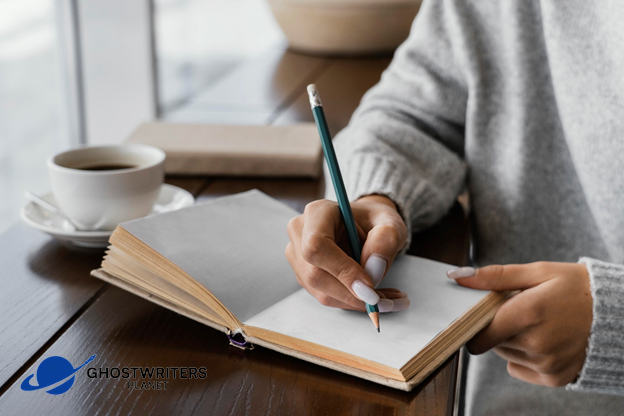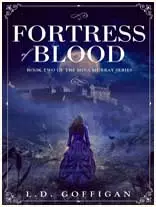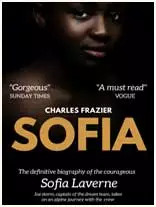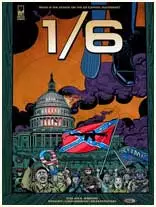Literary Devices: Top 10 Elements & Techniques for Writers

Particularly in poetry and fiction, literary devices are rather effective tools in various genres and writing styles. Writers use a range of literary methods to give their work depth, texture, and clarity, much as an artist might carefully choose brushes of varying bristles and sizes to create a masterwork. When used deftly and precisely, these techniques can turn common words into gripping stories with emotional significance or major insight. They are fundamental components that can enhance one's work and make it more unforgettable than mere embellishments.
From the workstations of Pulitzer Prize winners to the classrooms of aspiring writers, these technologies support elegant communication. Without the reader's awareness, alliteration and oxymorons enhance their experience.
When we study these literary masterpieces, we have to realize they are important much beyond just fictional or creative writing. These techniques are used by writers, marketers, reporters, and companies to liven their communications. Writing is much thanks for this secret hero who provides our stories complexity, darkness, and contour.
We shall closely review these 10 instrumental literary techniques to show their adaptability in different writing situations. Come on this illuminating trip as we value the art and science underlying words that have enthralled readers for millennia.
The Power of Sound: Alliteration
Alliteration beyond just repeating beginning consonants near together. A reader will find resonance in the complex ballet of sounds generating cadence and rhythm. Potency is the ability of alliteration to arouse emotions, moods, and ambiances. This contributes to define the scene or tone of a story. In corporate writing, strategic alliteration is quite powerful.
Beyond its appeal, "Crafting Creative Content" softly stresses uniqueness, inventiveness, and painstaking accuracy. It suggests action, significance, and inventiveness. In marketing, alliterative brand names or slogans are memorable and usually capture the core of the brand—short yet strong.
Hear the Words: Onomatopoeia
This literary technique powerfully captures life using sound outside of words. Onomatopoeia sweeps readers into the narrative. "buzz," "whirr," and "crackle" not only suggest noises but also mimic hearing. Especially in descriptive or narrative nonfiction, onomatopoeia can envelop readers. Think of outlining a morning ritual: "The alarm clock buzzed loudly, followed by the hiss of the coffee machine and the sizzle of eggs on a pan." Such words produce a multimodal experience. In marketing and branding, onomatopoeias can arouse particular feelings or sensations with a product, therefore appealing to the target market.
Hints and Clues: Foreshadowing
Not only a hint, but foreshadowing also generates suspense and expectation. This method gently threads bits or hints to create an early-on interesting tapestry of expectation for the reader. Authors construct a breadcrumb trail that invites readers into the story with seeds of future events or results. Foreshadowing in nonfiction has promise. One expert might declare, "The strategy I'll unveil in the next chapter changed the entire trajectory of my career." Such promises keep readers interested and ready for insightful analysis or creative discoveries. Foreshadowing increases coherence as well. It guarantees that important events or discoveries materialize as precisely designed moments just ready to shine. They seem not to be sudden.
Exaggeration with Impact: Hyperbole
Hyperbole mostly consists of exaggeration meant to highlight a point or arouse strong emotions. Still, it is not dishonesty. Exaggeration emphasizes a point by means of vivid images or scenarios created from imagination. When someone says, "I've told you a million times," we feel their annoyance without knowing exactly how many. In nonfiction, hyperbole can underline urgency or significance. A business adviser advises, "Adopting this approach could skyrocket your income to stratospheric heights." Though it sounds too strong, this quality grabs attention and emphasizes advantages. Nevertheless, hyperbole calls for grace. Abuse or overindulgence can sour reputation. When utilized selectively, it enhances the narrative and makes the message memorable, forceful, and frequently debatable.
Opposites Attract: Oxymoron
Perfect wordplays and oxymorons combine apparently contradictory words to make a powerful message. One would find a "bitter-sweet" feeling or "deafening silence" contradictory. Still, this juxtaposition helps us to better grasp the circumstances or feelings. In nonfiction, oxymorons can underline the complexity or dualism of a topic. Discussions on business or leadership could cover the "simple complexity" of a corporate model or "controlled chaos" in a startup. This sentence stresses the multidimensionality of the issue and exhorts readers to see past appearances. Moreover, oxymorons can be used to produce unforgettable lines or concepts, therefore simplifying the narrative. Like other literary devices, oxymorons can bring depth and richness to a writer's work, thereby improving it.
Revisiting the Past: Flashback
A flashback moves the reader via recollection into the past. It's more than just remembering; it's about experiencing the sights, sounds, sensations, and smells of the past. For writers—especially nonfiction experimenters— flashbacks offer a rich source of context. It allows readers to see from a panoramic perspective how historical events shaped the argument or narrative.
Try a biography of an entrepreneur. They can remember their early years in a garage with an idea and relentless determination as they talk about the success of their worldwide firm. Emphasizing their victories, this humanizes their path and offers a compelling counterpoint.
By emphasizing historical antecedents, flashbacks help the author to establish her assertions on actual events in social or historical research. They give a basic narrative complexity and wisdom.
A flashback should be planned and punctual, just as a camera flash is. Overindulging could throw off the main narrative and perplex readers. When handled sensibly, though, it can give a story more complexity and evoke nostalgia, wisdom, or foreboding.
Whose Story Is It? Point of View
Every narrative offers a different viewpoint that helps to vividly bring events and people alive. POV covers who drives the story, going beyond pronoun choice. Whether a story is seen from first-person confession, second-person direct address, or third-person omniscient overview, the point of view profoundly influences how it is understood.
Think about nonfiction. Most of it is in the first person, which lets authors talk about their own experiences. This "I" viewpoint could enable readers to connect and live in the author's shoes. "In my own life, I found meditation to be a source of immense clarity," a self-help book may state. Readers are invited inside the author's life by this intimate statement.
One often disregarded viewpoint is the second-person one. Approaching the reader, this "you" point of view provides guidance or challenges their points of view. Diet books ask, "You've tried many diets, but have you considered the science behind each?" to inspire ideas and actions.
The remoteness of the third person helps historical narratives and biographies. To characterize someone, biographers would say, "John Doe's rise to fame was nothing less than meteoric." From this vantage point, events can be methodically arranged without emotional prejudice.
Still, viewpoint transcends language. This deliberate act influences understanding, participation, and reader empathy. Though every point of view has advantages, the secret is to align it to the goal of the story so it strengthens the narrative.
Softening the Blow: Euphemism
One of the most effective tools available for evoking everything from happiness to grief is language. Sometimes, actual quotes or raw facts are too clear, strong, or terrifying. This is a euphemism—that delicate language of dance. E-euphemisms stand in for direct or unpleasant words or phrases. They mitigate the severity of life, therefore lessening its effect.
Even if the issue is still severe, the tone is more objective and less emotional when corporate layoffs are labeled as "downsizing" or "rightsizing." Consider our personal existence instead. Said as "passed away," "gone to a better place," or "resting in peace," death's finality is mitigated.
Still, euphemisms accomplish more than only help to ease difficult circumstances. They are what enable a civilized society to encourage debates on personal, private, or controversial subjects. Say "bending the truth," or "stretching facts," instead of "lying." One is "advanced in years," not "old."
Euphemisms are dangerous even if they preserve grace and compassion. Overuse might make a statement less significant. Too much use could also seem dishonest or evasive.
Like pillows, euphemisms soften the sharp edges of reality. They remind us that occasionally, the unspoken or spoken differently can have the same effect as the pure, unvarnished truth.
Everyday Language, Extraordinary Impact: Colloquialism
Discover expressions from formal tones to the laid-back, even intimate cadence of normal speech by exploring any language of any society. The latter category include colloquialisms. Common terminology and phrases used in regular conversation but not in official papers define our informal contacts.
Literature bridges sections with colloquialisms. Characters get more human; their conversations reflect everyday speech. Just consider it. If a modern fiction character asks, "Whatcha up to?" rather than "What are you doing?" it seems more intimate, as you might overhear in a cafe.
In business and marketing, colloquial can be the voice of a brand. Speaking the same language as its target market could help a company project friendliness. A brand claiming its new product to be a "game changer" tells its audience to "get the lowdown," thereby sounding more like a friend than a business.
Though occasionally harmful, colloquial language is powerful. Using popular phrases, regional accents, or slang puts one in danger of offending some readers. Quiet or reasonable in one place or age group could not be so elsewhere. Sometimes overuse gives a writing an artificial forced or effortful quality.
For speakers and writers, colloquialisms offer immediacy, proximity, and relevance. They serve as a reminder that language is profoundly rooted in daily life, dynamic and living. It's about including into our story street, market, and friend's conversations.
Bringing Inanimate Objects to Life: Anthropomorphism
The amazing field of anthropomorphism blends our great non-human surroundings with human feelings. This literary device gives objects, animals, and abstract ideas of human qualities, emotions, and behavior like a magic bridge. Children's stories include talking animals, athletic wear, and human-like sensations since people find storms "angry" and lone trees in fields "lonely."
Not only is anthropomorphism imaginative for children's books. It satisfies a basic psychological demand. Humanizing non-humans helps us to establish contact with them. This can boost empathy. Therefore, abstract or foreign concepts become more relevant. Products are represented in branding by mascots, including Tony the Tiger and M&Ms. Guiding people through brand stories, these companies promote relatability, familiarity, and trust.
Literary anthropomorphism is well known. Aesop's Fables teach principles by means of anthropomorphic animals. Their human-like behavior reflects human qualities and vices in novel and enlightening ways.
Though it looks good and is useful, the gadget calls for grace. Over-anthropomorphizing can obscure fiction from reality and alienate or confuse viewers. Saying a vintage car "tired and old, yearning for the open roads of its youth might be poignant" suggests, for example, that it evokes sadness or nostalgia beyond most adults.
Anthropomorphism can fool science and nature writers as well. Emotions shared with animals would help to alleviate challenging actions. It also makes one sympathetic to far-off or meaningless species or locations.
Anthropomorphism reveals our imagination and need to see ourselves reflected in others. Stories about talking toasters or lyrical descriptions of sad moons close the known from the strange, familiarizing, and seductive universe.
limited Time offer
- 00
- 00
- 2





